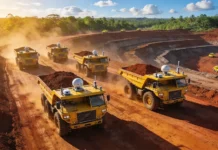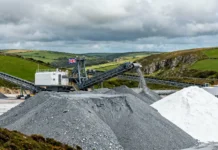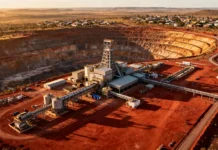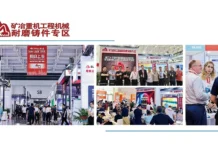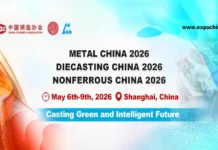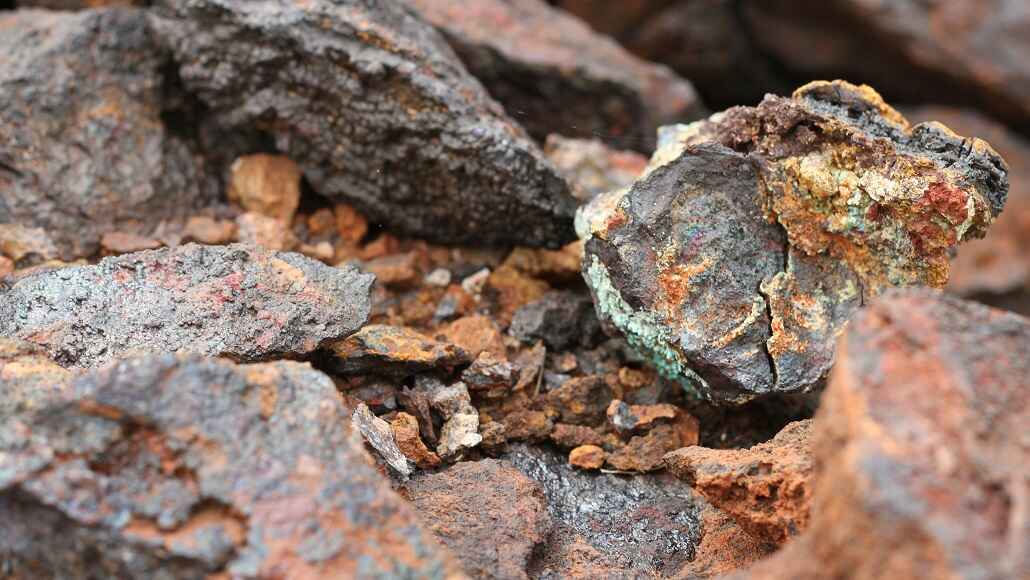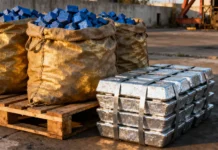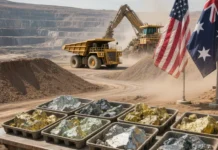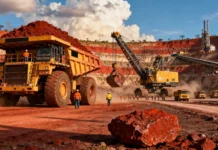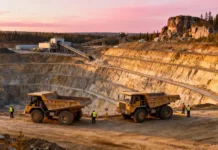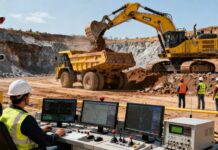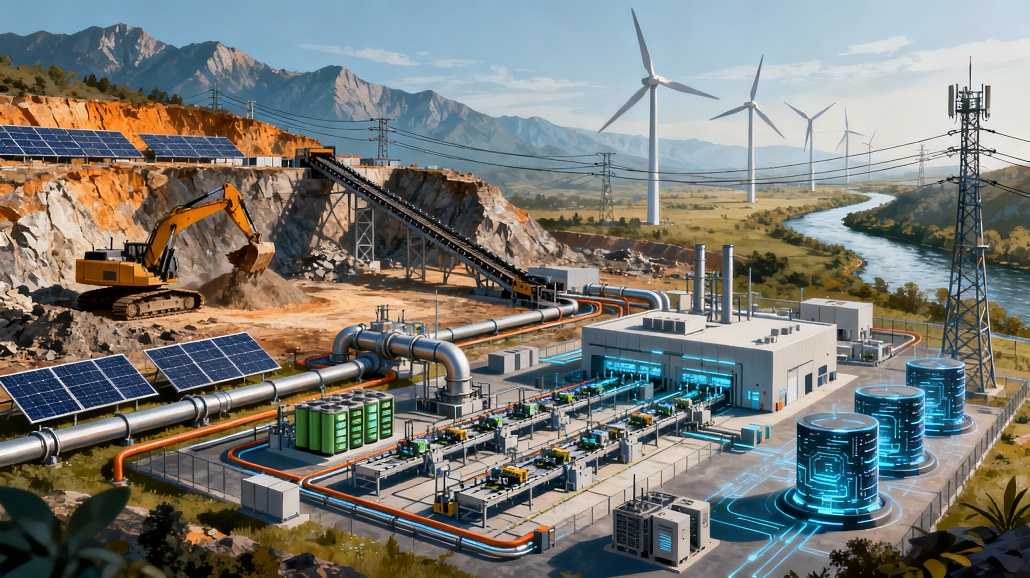Positioning Mining at the Crossroads of Global Industrial Transformation
For decades, mining occupied a specific, bounded role in the global economy. Mining companies extracted minerals and delivered them to downstream industries for processing and manufacturing. This linear, compartmentalized model treated mining as distinct from other industries, with limited interaction beyond commodity transactions. Today, this historical separation is dissolving. Mining increasingly sits at the nexus of interconnected industrial ecosystems where energy transition, technology innovation, sustainability transformation, and manufacturing integration converge.
Industrial transformation in mining extends far beyond operational improvements within mining companies. Instead, it encompasses mining’s evolving role as critical enabler of broader global industrial transformation. Mining companies positioned as leaders in this industrial transformation and actively engaging with cross-sector innovation collaborate with energy companies, technology firms, manufacturers, and sustainability organizations to shape how industrial systems evolve. This integrated positioning increasingly defines competitive advantage and strategic relevance.
The Changing Context of Mining’s Industrial Relevance
Historical mining served straightforward economic function—extracting minerals for downstream use. Demand came from established industries following stable patterns. Mining companies optimized for low-cost extraction, producing standardized commodities into established markets. This model worked adequately for decades because industrial demand remained predictable and innovation occurred primarily in downstream industries.
Contemporary industrial transformation fundamentally alters this context. The global energy transition demands massive quantities of battery metals, copper for electrical systems, and other minerals essential for renewable energy infrastructure. Electric vehicle proliferation requires enormous mineral quantities for batteries, motors, and power systems. Digital device proliferation demands rare earth elements, copper, and rare metals. Simultaneously, climate change, water scarcity, and other environmental pressures demand mining innovation addressing sustainability requirements.
Mining as Energy Transition Enabler
Industrial transformation in mining increasingly connects mining with energy systems transformation. Battery metals—lithium, cobalt, nickel, manganese—prove essential for energy storage enabling renewable energy deployment. Copper, essential for electrical transmission, becomes critical infrastructure in electrified energy systems. Rare earth elements enable efficient motors and power electronics in renewable applications.
Mining companies are beginning to recognize that demand for minerals increasingly depends not simply on mineral quantity but on mineral production methods. Customers increasingly demand minerals produced through sustainable processes; investors increasingly favor mining companies demonstrating emissions reductions; regulatory frameworks increasingly mandate sustainability requirements.
This evolution drives mining companies beyond pure commodity suppliers toward integrated partners in energy transition. Leading mining companies collaborate with renewable energy developers, battery manufacturers, and electric vehicle producers to ensure mineral supply aligns with energy transition requirements. Rather than reactive response to energy industry demands, progressive mining companies proactively engage in energy transition planning.
Technology Integration and Cross-Sector Innovation
Contemporary industrial transformation emphasizes technology integration across historically separate sectors. Mining increasingly integrates with technology innovation rather than existing as distinct industry experiencing technology adoption.
Software companies developing artificial intelligence and analytics systems increasingly focus on mining applications. Equipment manufacturers collaborate with mining companies to develop autonomous systems suitable for mining environments. Energy companies partner with mining operations to develop renewable energy systems optimized for mining power requirements. These collaborations blur historical boundaries between industries, creating genuinely integrated industrial ecosystems.
Mining companies engaging actively in cross-sector innovation access capabilities and perspectives previously unavailable through conventional mining channels. Technology startup innovations in robotics, artificial intelligence, and analytics find mining applications through collaborative partnerships. Conversely, mining operational expertise proves valuable for technology companies developing real-world solutions for complex industrial challenges.
Sustainability Integration as Competitive Driver
Sustainability transformation increasingly drives industrial transformation across sectors. Mining represents crucial leverage point because mining produces environmental impacts while simultaneously enabling sustainability transitions. How mining companies address environmental challenges simultaneously affects mining’s own sustainability and mining’s contribution to broader industrial sustainability.
Forward-thinking mining companies recognize that integrated sustainability approaches create competitive advantage. Rather than viewing sustainability as compliance burden, these companies identify how sustainability innovation enables new business opportunities. Tailings reprocessing creates revenue sources while addressing environmental liabilities; renewable energy adoption enables decarbonization while potentially reducing long-term energy costs; water recycling improves sustainability while addressing water scarcity challenges.
This integrated sustainability thinking extends through supply chains. Mining companies increasingly collaborate with downstream customers to identify how mining sustainability improvements support customer sustainability objectives. Battery manufacturers, for example, increasingly demand low-carbon mineral production because it enables them to produce lower-carbon batteries serving lower-carbon vehicle and energy storage applications. Mining companies meeting these low-carbon demands access premium market segments and customer relationships supporting long-term commercial stability.
Stakeholder Integration and Distributed Governance
Industrial transformation in mining emphasizes engagement with diverse stakeholders rather than traditional extractive industry models where mining companies made decisions with limited external input. Contemporary stakeholder expectations increasingly demand that mining companies acknowledge obligations to workers, local communities, environmental protections, and broader societal interests.
Mining companies successfully engaging with complex stakeholder landscapes develop governance structures and engagement processes ensuring diverse perspectives inform decision-making. Rather than viewing stakeholder engagement as compliance obligation, progressive companies recognize engaged stakeholders as sources of valuable input improving operational decisions. Communities understand local context better than distant corporate offices; environmental organizations bring expertise in sustainability practices; technology partners bring innovation capabilities; regulatory agencies ensure compliance with evolving standards.
Distributed governance models enable this stakeholder integration. Rather than centralized decision-making, distributed approaches empower local management to make decisions reflecting local context while maintaining connection to corporate strategy and performance expectations. This approach simultaneously respects local autonomy, maintains corporate accountability, and harnesses stakeholder input throughout organizations.
Strategic Positioning in Emerging Industrial Ecosystems
Leading mining companies are strategically positioning themselves within emerging industrial ecosystems rather than remaining isolated commodity suppliers. These companies recognize that mineral demand increasingly connects to broader industrial transformations; therefore, positioning mining companies as integral partners in these transformations creates competitive advantage.
Some mining companies are investing downstream in battery manufacturing, renewable energy components, or other value-added activities. Rather than selling raw materials into markets, these companies capture greater value by participating in manufacturing industries utilizing their products. This vertical integration approach proves particularly attractive for battery metals where customer integration enables direct understanding of customer requirements, ensuring mining production aligns with customer specifications.
Other mining companies are positioning themselves as solutions providers for industrial sustainability challenges rather than simple commodity suppliers. By offering not just minerals but comprehensive solutions addressing customer sustainability requirements, these companies create strategic relationships more resilient than transactional commodity relationships.
The Role of Regulation and Policy in Industrial Transformation
Industrial transformation in mining increasingly operates within regulatory frameworks mandating sustainability requirements, emissions standards, and resource efficiency improvements. Rather than viewing regulations as constraints, sophisticated mining companies recognize regulations as policy instruments shaping industrial transformation.
Mining companies engaging proactively with regulatory development influence how requirements evolve. Companies developing clean mining capabilities ahead of regulatory requirements position themselves for advantage as regulations tighten and competitors scramble to comply. Conversely, companies resisting sustainability requirements risk eventual competitive disadvantage as regulations drive industry transformation regardless.
Policy frameworks supporting energy transition, circular economy development, and sustainability improvements create business opportunities for mining companies prepared to capitalize on them. Carbon pricing, renewable energy subsidies, circular economy incentives, and sustainability standards create market conditions favoring sustainable mining practices. Mining companies aligned with these policy directions benefit from favorable market conditions; companies opposing these trends face increasingly challenging competitive environments.
The Future of Mining in Global Industrial Transformation
The trajectory of industrial transformation clearly indicates mining’s role will continue evolving from isolated commodity supplier toward integrated partner in complex industrial ecosystems. Mining companies that successfully position themselves at the nexus of energy transition, technology innovation, and sustainability transformation will thrive. Those maintaining historical commodity supplier models risk irrelevance as industries transform around them.
The next decade will likely witness substantial consolidation and transformation within mining industry. Companies adapting successfully to integrated industrial ecosystems will expand and prosper. Companies failing to adapt will face competitive challenges, regulatory pressures, and stakeholder opposition. This transformation represents neither threat nor opportunity alone—it represents fundamental reconfiguration of mining’s role in global economy.
For investors, workers, communities, and other mining stakeholders, this transformation presents opportunity. Mining positioned at the center of industrial transformation offers potential for creating genuine value—environmental improvement, sustainable resource development, technology innovation, and economic opportunity simultaneously. Mining companies that embrace industrial transformation and position themselves as partners in broader societal evolution create opportunities for all stakeholders while securing long-term business viability.
The mining industry stands genuinely at crossroads of global industrial transformation. The path forward leads toward increasingly integrated, sustainable, technologically sophisticated mining operations positioned as essential infrastructure supporting global transitions toward sustainable, clean, technology-enabled industrial systems. Mining companies and stakeholders positioning themselves for this transformation will define mining’s next era.


